I arrived in Los Angeles a few days into the WGA Strike. Great timing, I know. But while it certainly put a dent in procuring meetings and auditions, watching the town come to a halt in the absence of weekly television production schedules was a crash course in the intricacies and enormity of the Hollywood machine. Where else, I wondered, is the entertainment industry such a huge part of a city’s economy? Is there another city that exports so much of its product beyond its own country’s borders?
Mumbai immediately came to mind. Mumbai (formerly called Bombay) is India’s most populous city and the home of Bollywood, which is the catch-all name given both to a type of large-scale, commercial movie the city is famous for and the industry scene itself. While at Minerva we focus on energizing and evolving the conversation of the LA acting life, I’ve always hoped we’d have the opportunity to explore acting in Bollywood. When Mark Bennington, one of LA’s busiest headshot photographers, sent me an email about an on-going project in which he’s juxtaposing images of the Hollywood actor and the Bollywood actor, I knew I’d found our man.
While the term ‘Bollywood movie’ is likely to evoke images of the family-oriented musical romances that are the industry’s economic powerhouses, Mumbai is also home to a rich tradition of independent filmmaking that began with the Parallel Cinema movement of the 1950s. In the 1970s, Bollywood films began to take an ever-increasing share of the international box office, with particularly large audiences in the US and Russia. And of course, with the attention brought by the recent success of Slumdog Millionaire, a new crop of international producers and investors is exploring the city’s film community. Last month, Mark and I sat down to discuss his January 2010 trip to Mumbai to document the lives of its actors. He was immediately struck by how much the city felt like LA – the beaches, the population, the big dreams, and, of course, “the Starbucks where all the aspiring actors hang out.” Here are a selection of photos from this work-in-progress and the stories behind the images.
One enormous difference between Hollywood and Bollywood is the absence of acting unions in India. As such, residuals payments for actors don’t exist, and the industry functions relatively agent-less; actors negotiate their own deals, and actors at all levels find auditions through their personal networks and word-of-mouth. Ashwin Mushran, a Mumbai native, attended drama school at The Drama Studio in London. Ashwin’s career is exceptional because he works in several areas of the industry (voice over, movies, television) at once. Explains Mark, “There’s far less cross-over between media for the actor in Mumbai than in the States.” Ashwin is also one of the few to have a manager. Many of his opportunities come from his three years of starring on The Great Indian Comedy Show, a popular television series. His current bread-and-butter, like many American actors’, is commercials. Though booking a couple of ‘nationals’ a year isn’t going to cut it for the Mumbai actor; with a day rate of 7,000 rupees ($150.00) and no residuals, there’s no downtime from the hustle.
In this photo, Puja Verma prepares in her dressing room of Bhagya Vidhata, a popular soap opera. Puja comes to acting after attending college in the US and working a corporate job in Minneapolis. Upon her return to India, she took an acting class as a hobby and saw an audition posting for the soap at her acting studio. She won the part and now spends on average 25 days a month shooting.
Neetu Chandra is in her prime as a Bollywood starlet. She works only in features and is recognized as one of the country’s most exciting up-and-comers, “Comparable to Charlize Theron, 10 years ago,” says Mark. Neetu is from Northern India and began working after a year-and-a-half of struggling in Mumbai. One of Neetu’s particular talents is using the press to keep her image in front of the public and producers. At the time of this shoot, Neetu was in the news for appearing in a newspaper in risque, Sapphic photographs with another actress. Mark was struck at how assertively she managed their session, coming to set – entourage in tow – with tons of ideas for
set-ups. Yet despite the star trappings, Mark said she was “sweet as can be” throughout the shoot and ended the day by extending an invitation to tea with her and her brother.
Whistling Woods International is an established film school in Mumbai that offers a two-year acting program. In this photo, student Muddasir Zafar participates in an emotional recall exercise. With a $29,000 price tag, the program is in the reach of only the most privileged students. One of the organizing structures of Indian society is its caste-system, a Hindu social stratification system in which social classes are defined by hereditary groups. Though caste-based discrimination was outlawed by India’s Constitution in 1949, the system is still prevalent and certain professions are dominated, controlled, and/or accessed only by certain castes and sub-castes. As such, Mark explained, “It’s likely that you have to be pretty well-off, to have a lot of support from home, to come to the big city and try to make it acting. Survival jobs don’t really exist. Maybe here and there, but – because of the caste system – you can’t just go out and get a job waiting tables.”
“Mumbai is India’s film city, Delhi is its theater capital – much like the LA/New York split here,” explains Mark. Naved Aslam spent the 80s in Delhi as a theater actor and then began working behind the scenes in Mumbai’s film industry in the 90s. As an actor, he started working steadily in films in 2000. Naved still works in the theater, though, including a turn in an Indian production of Threepenny Opera that toured the states in 2004. He also teaches acting. What stood out about Naved during the shoot? “He has so much integrity in the way he talked about acting, theater, the whole process,” says Mark. “He’s seriously dedicated.”
Shashi Kapoor is the proprietor of The Prithibi Theater in Mumbai, one of Mumbai’s most established theaters, “Like the CTG, The Taper in LA,” says Mark. Shashi is a member of the Kapoor family, a huge theater dynasty in India (comparable to the Barrymores or Lunts back in the day) and was a “megastar” in films in the 1960s and 70s.
Deepak Dobriyal has been in the business for ten years. He too started in the theater in Delhi and moved to Mumbai in 2002. He recently won a Special Performance Filmfare Award (India’s equivalent of the Oscar) for an adaptation of Othello called Omkara. He now gets offers for parts, but he still auditions frequently, estimating that he’s booked 25 jobs out of 1,000 auditions. Here, Deepak sits in producer Guneet Monga’s office. “The movie industry in Mumbai feels like a giant campus,” says Mark. “When they’re not working, between appointments, everyone just hangs out in each others offices, playing ping pong, hatching ideas and plans.”
Gaurav Gera spent three years acting with Ashwin in The Great Indian Comedy Show and now appears on another comedy series for Sony in which he plays a woman (which, he says, happens often). He began his career as a dancer and then got his break on India’s version of Ugly Betty (playing a man). He works 4-7 days a month at $3,000 a day, much of it earned hosting award shows and charity functions. “He was so relaxed,” said Mark. “See his shirt? ‘Cheers to Being Single’? That’s Gaurav.”
Mark recalled that, in each of his conversations, the actors said it would be the “will of God” that would ultimately determine the height of their careers. The decision to come to Mumbai to pursue their dreams was a way of embracing their destiny, whereas so many of us come to Hollywood in order to transcend what we perceive as ours. Bollywood’s ethos is to “dream bigger” at the same time that one’s opportunity to even play the game is deeply influenced by one’s place in the caste system. Yet India’s biggest star is Sharukh Khan, whose working class Muslim origins placed him far outside the Hindu establishment. “They love him,” explains Mark, “because his is such a Hollywood story.” As with any vibrant artistic community, Bollywood’s creative lifeblood, like Los Angeles’, may lie in its contradictions.
Mark will return to Mumbai later this year to continue documenting its actors. To see more images of this project and others (including his headshot work), visit his website.
Post Title Image – Puja Verma on the set of Bhagya Vidhata
All images copyright Mark Bennington Photography










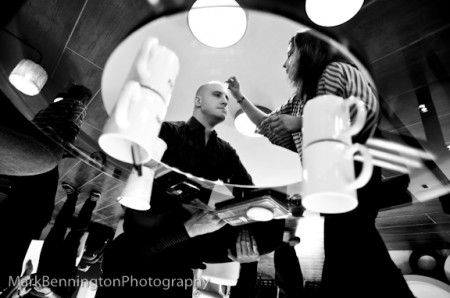
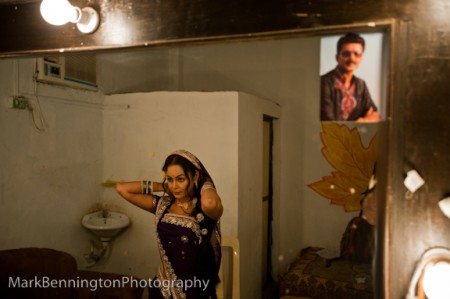
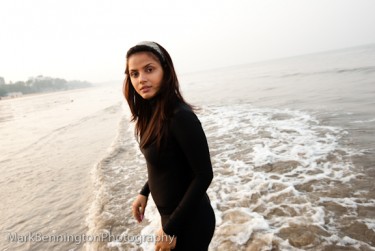


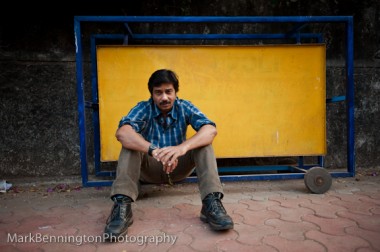
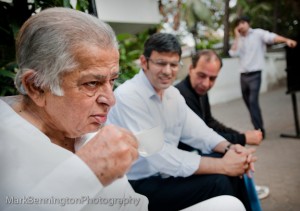
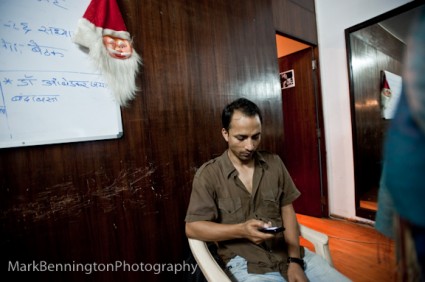
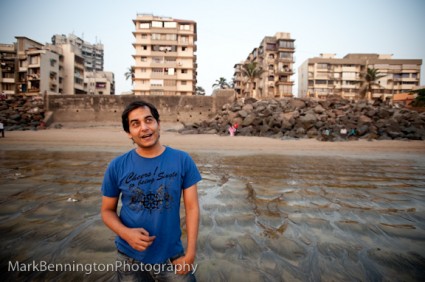















[…] The Bollywood Actor: Photographs by Mark Bennington « Brains of … […]
Cool post, I’ve added a Trackback to it on my blog…